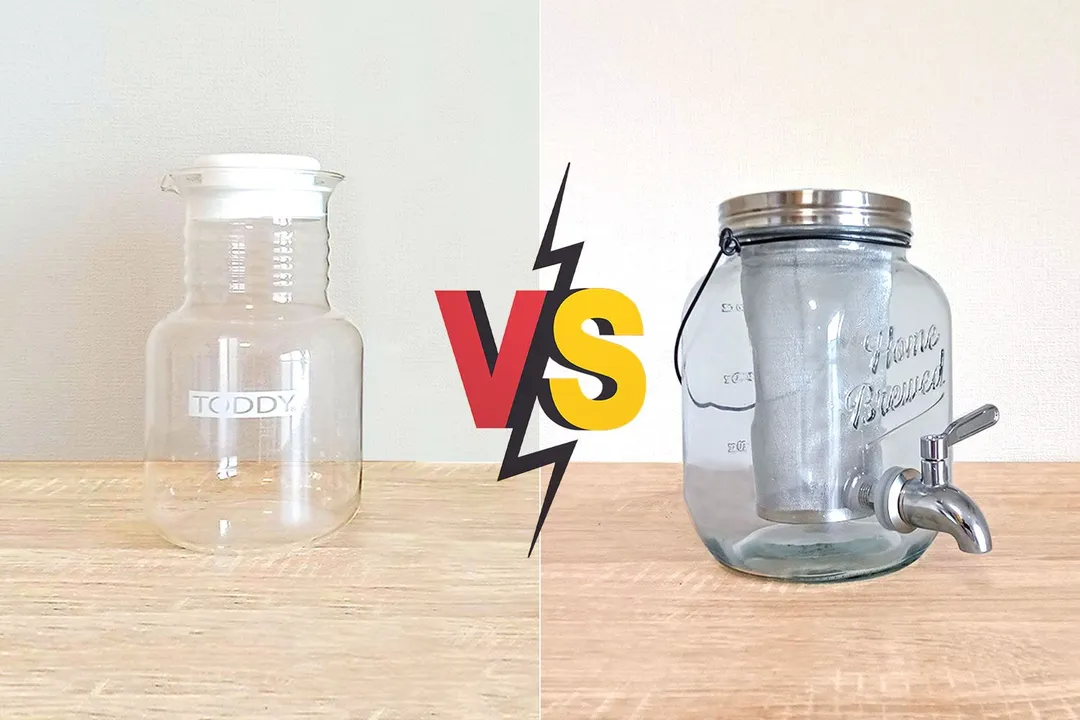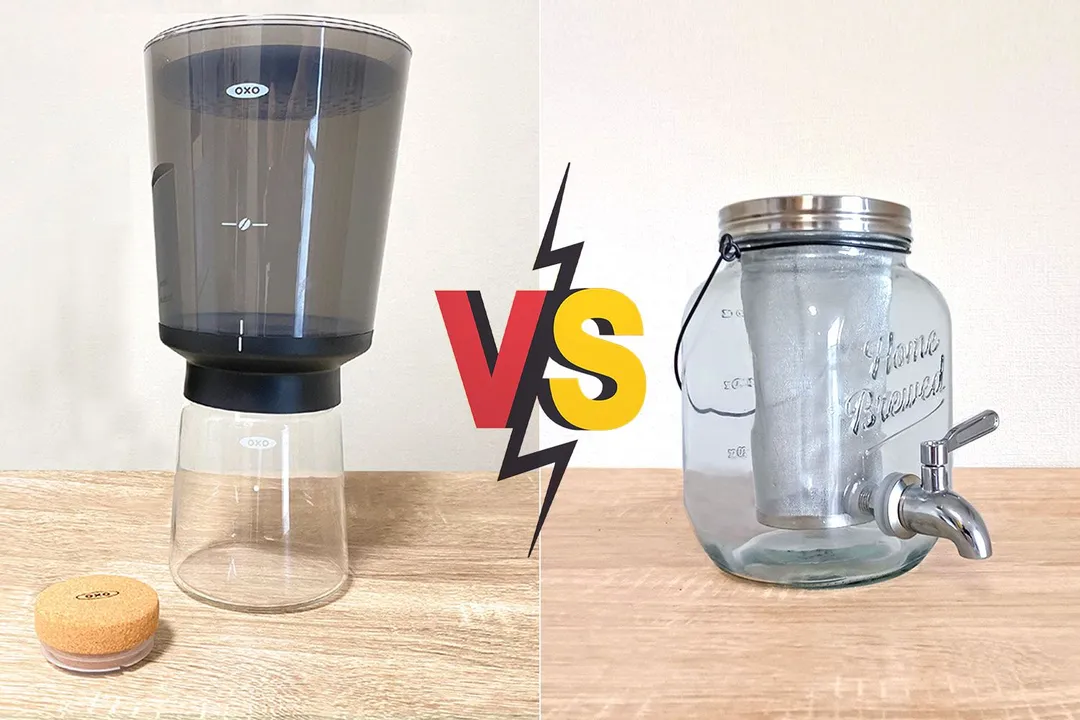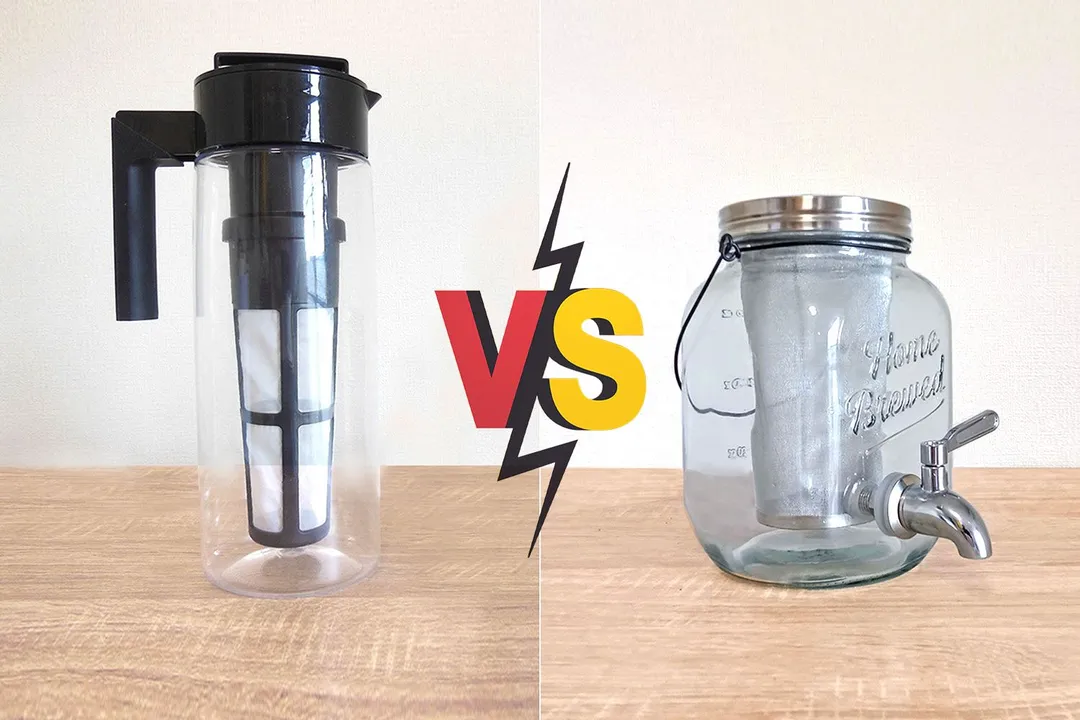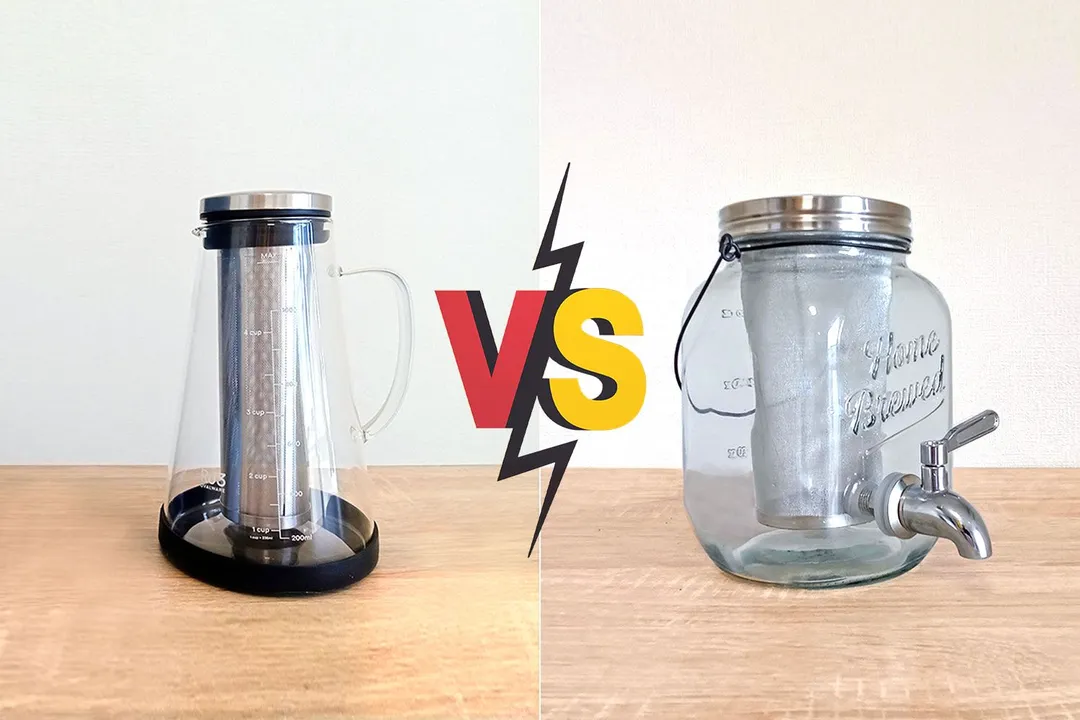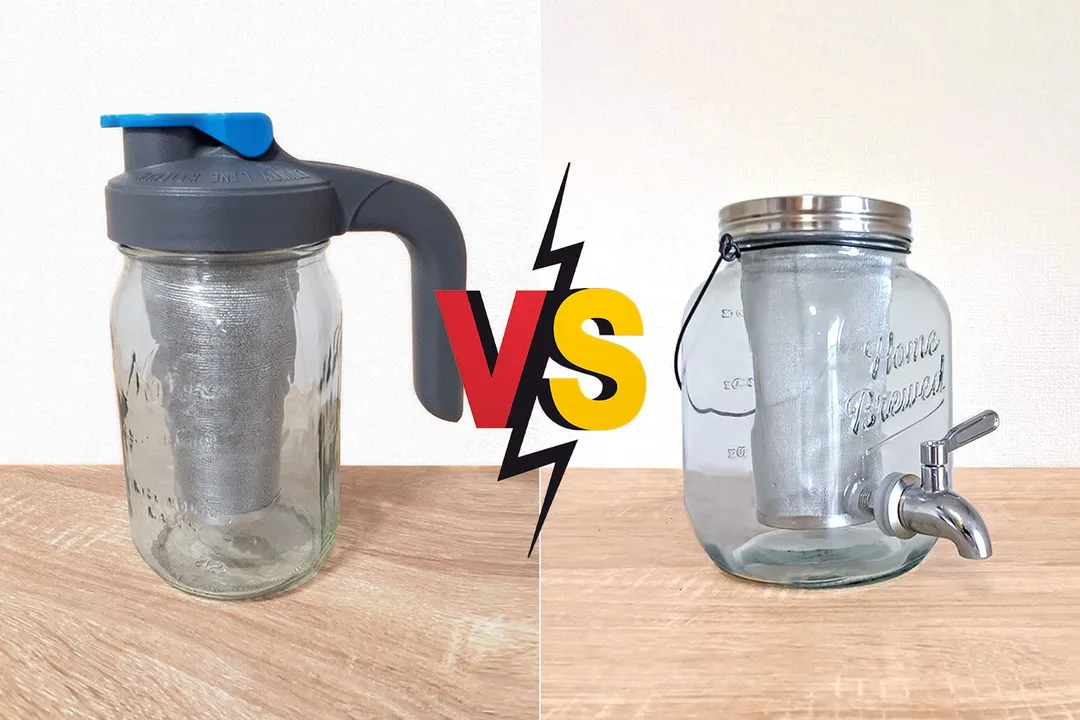Our recommendations are made independently through Research & Testing. We may receive commissions from purchases made via our links.
Hario Mizudashi vs Willow & Everett Side-by-Side Comparison
Hario Mizudashi cold brew coffee maker vs Willow & Everett mason jar. Two very different designs and sizes, one lacking in fundamentals.
Hario Mizudashi
Tested Using Methodology v1.0Willow & Everett 1 Gallon
Tested Using Methodology v1.0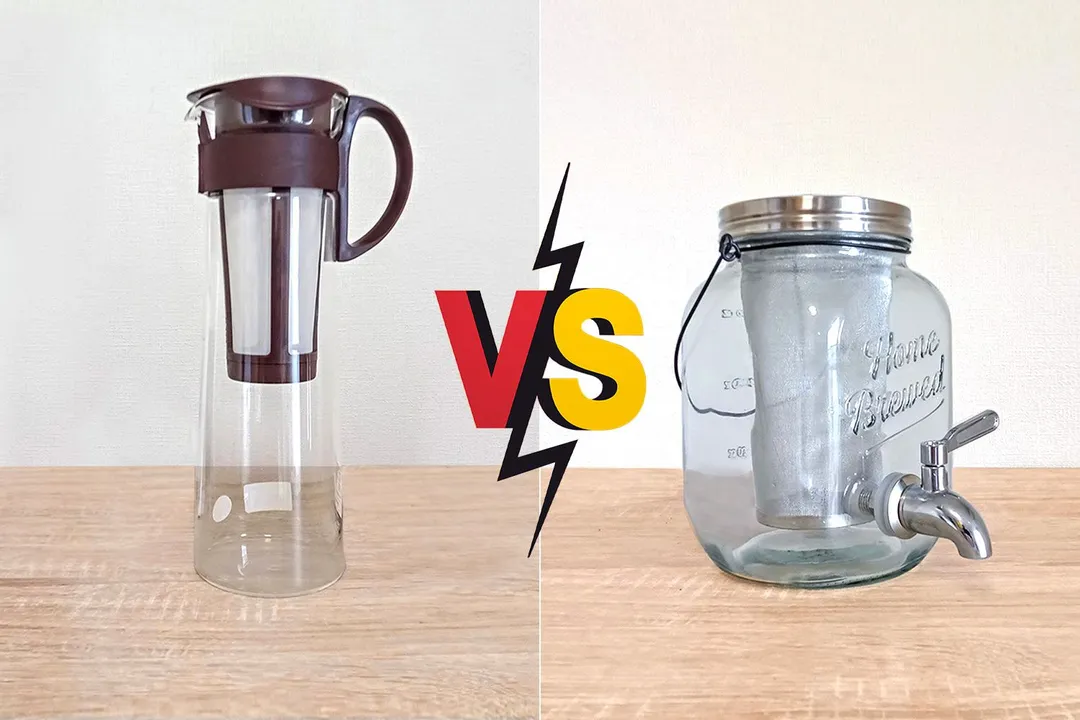
Overall Verdict
The aesthetics of the Hario Mizudashi and Willow & Everett brewers could not be more different. The Hario is quite tall and slender, ideally suited for in-door brewing even in a small refrigerator. Apart from its poor brew ratio (1:14), the Hario is not airtight. It produced one of the poorest quality brews for an immersion filter brewer and is a brewer we recommend you avoid.
In stark contrast, the Willow & Everett has the appearance of a rotund barrel and the one gallon is one of the largest cold brew coffee makers. The Willow & Everett, compared to the Hario, produced one of the best quality brews for an immersion filter brewer.
However, the design and material quality of the Willow & Everett could be better. The lid is of poor quality, the spigot tap doesn’t always work well, and the surrounding glass is fragile - more so with the half-gallon jar than the one gallon one.
Pros & Cons
- Attractive brew decanter
- Easy-to-clean filter
- Color choice
- Hot or cold brewing
- Funky design
- Brew ratio
- Brew quality
- Tap dispenser
- Not airtight
- Odor contamination
- Poor brew quality
- Lid design
- Weak glass around tap
- Tap is temperamental
- No literature
Key Specs
Where to Buy
*You help support HealthyKitchen101's product testing and reviews by purchasing from our retail partners.
Analysis and Test Results
Brew Quality
Bouquet
Drinkability

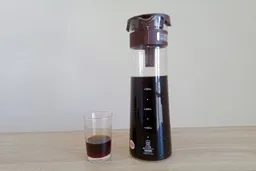
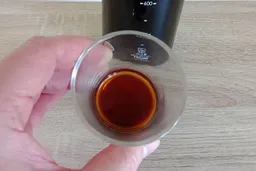
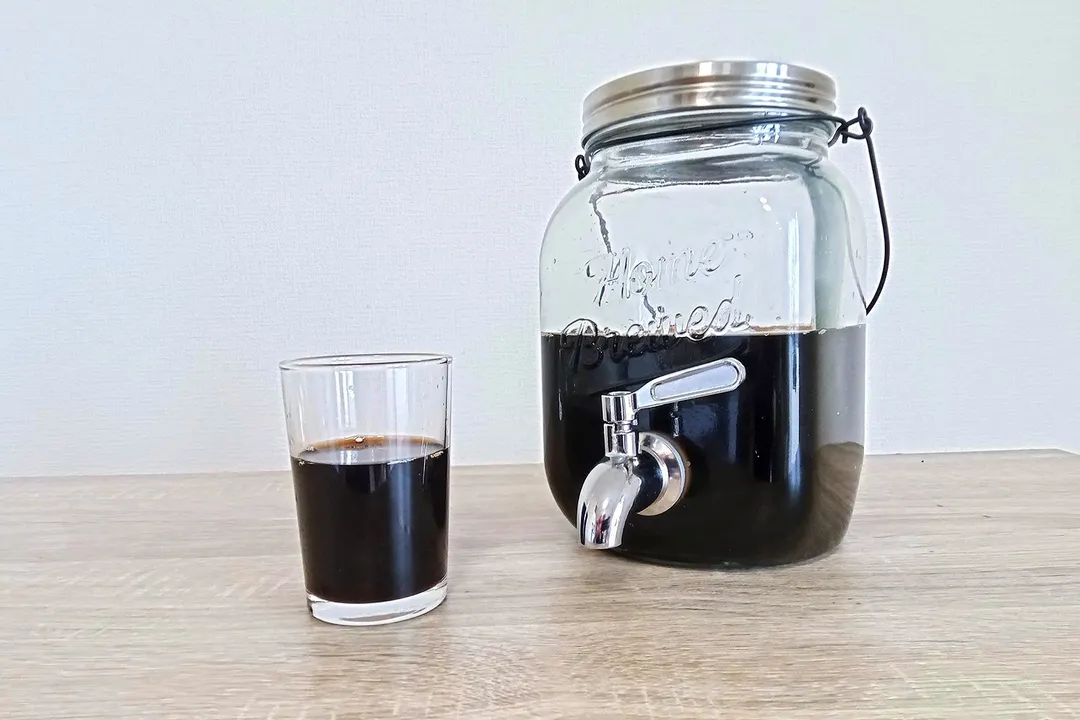
Sediment
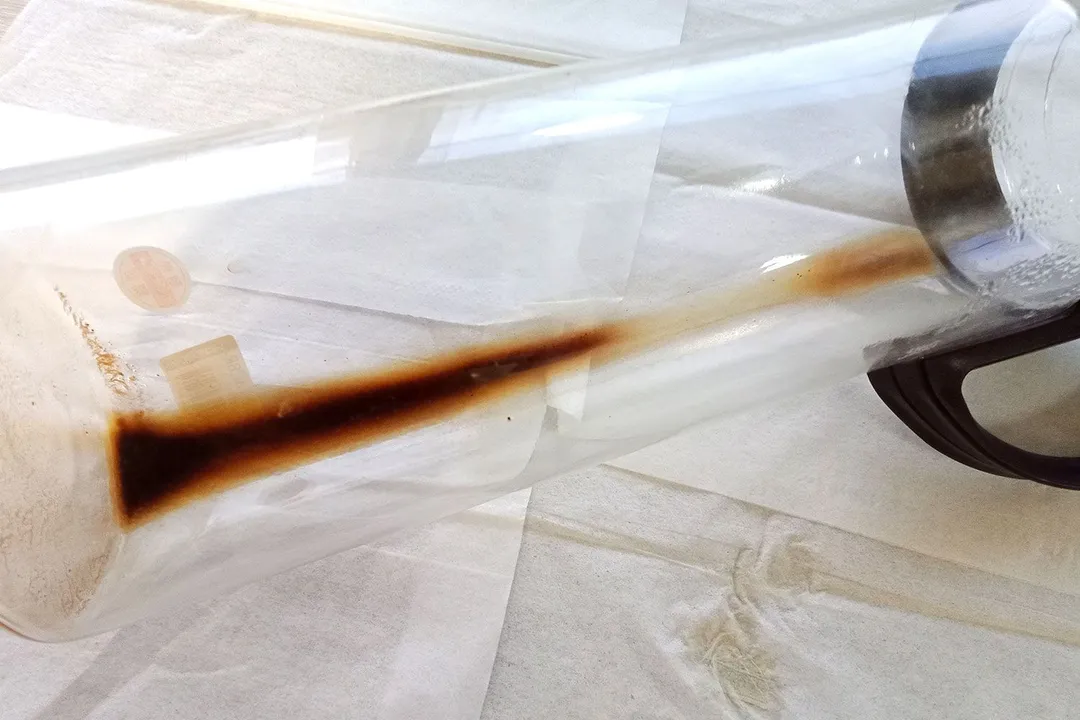
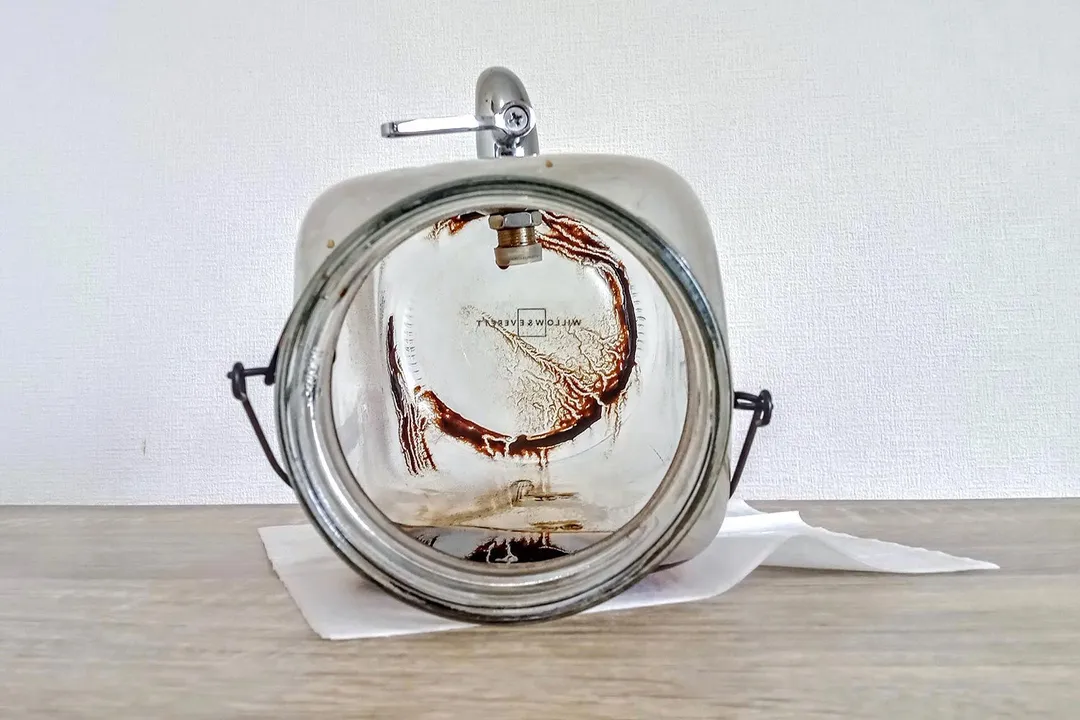
Design
In the Box
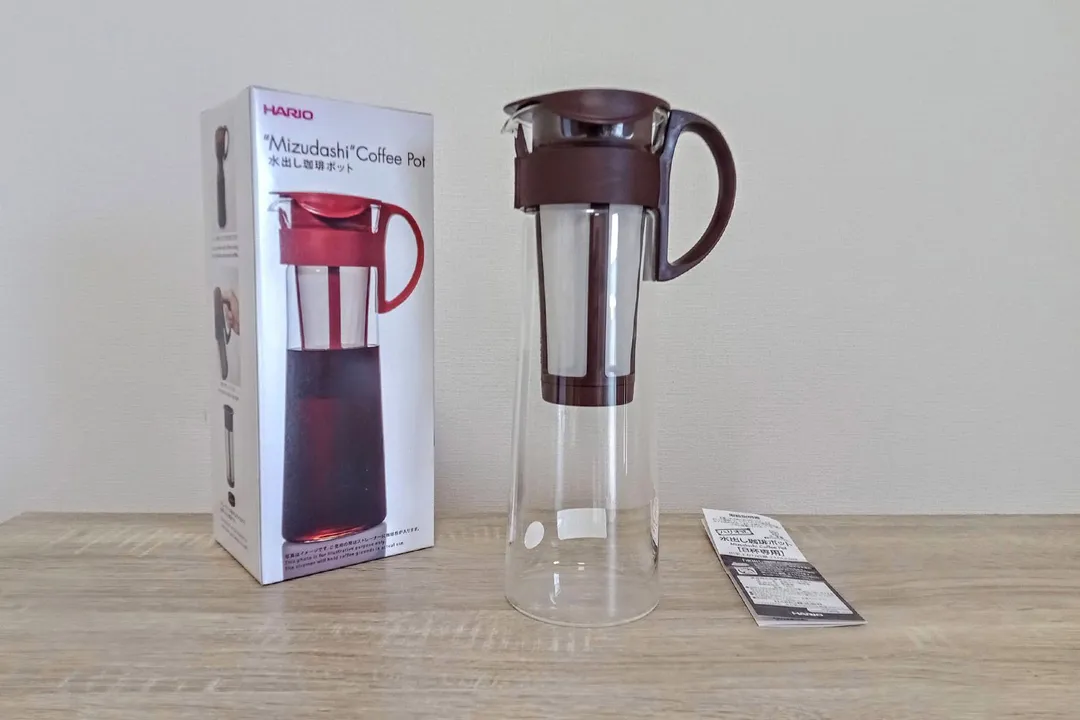

Decanter

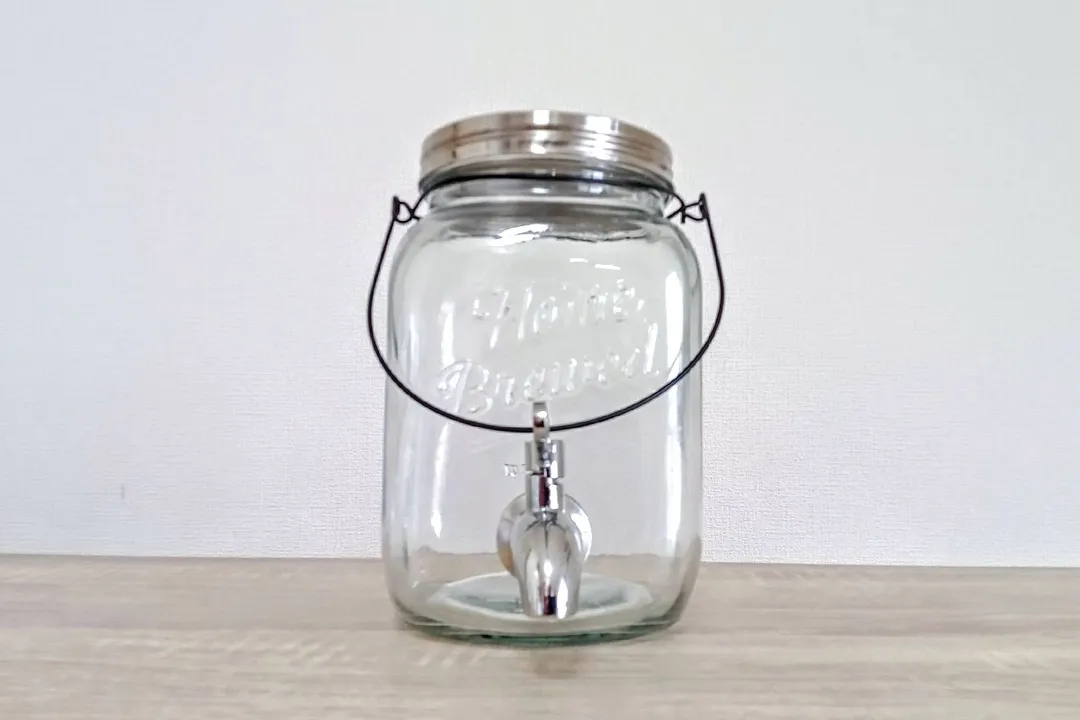
Stopper / Lid
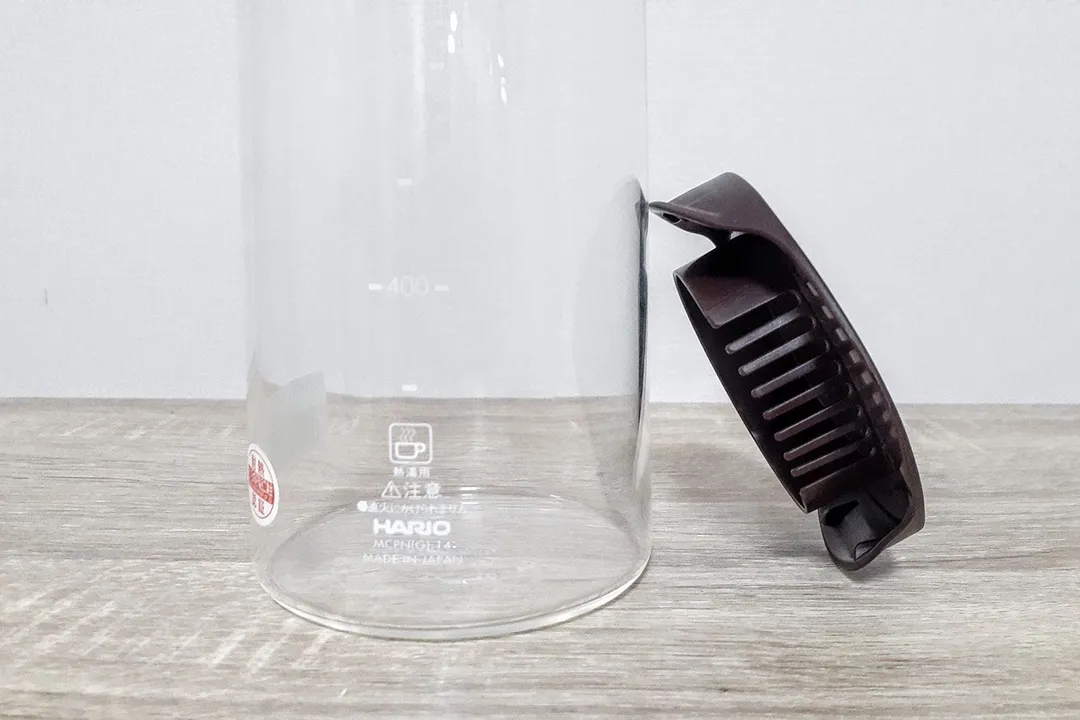

Filter
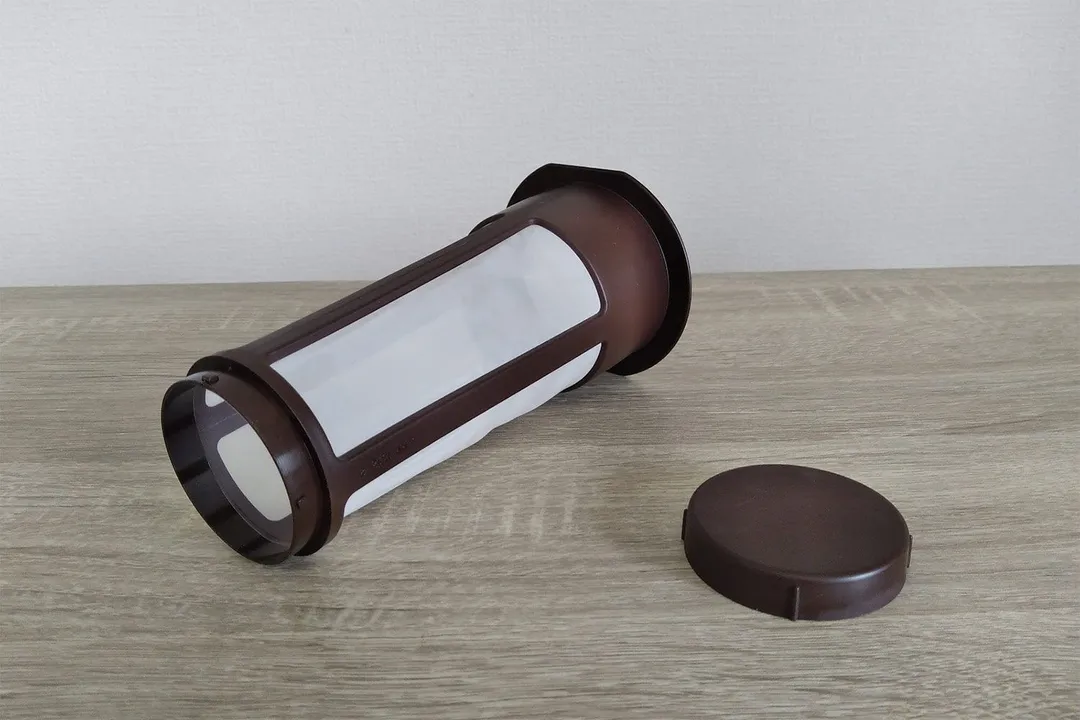

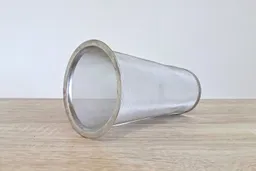

Build Quality
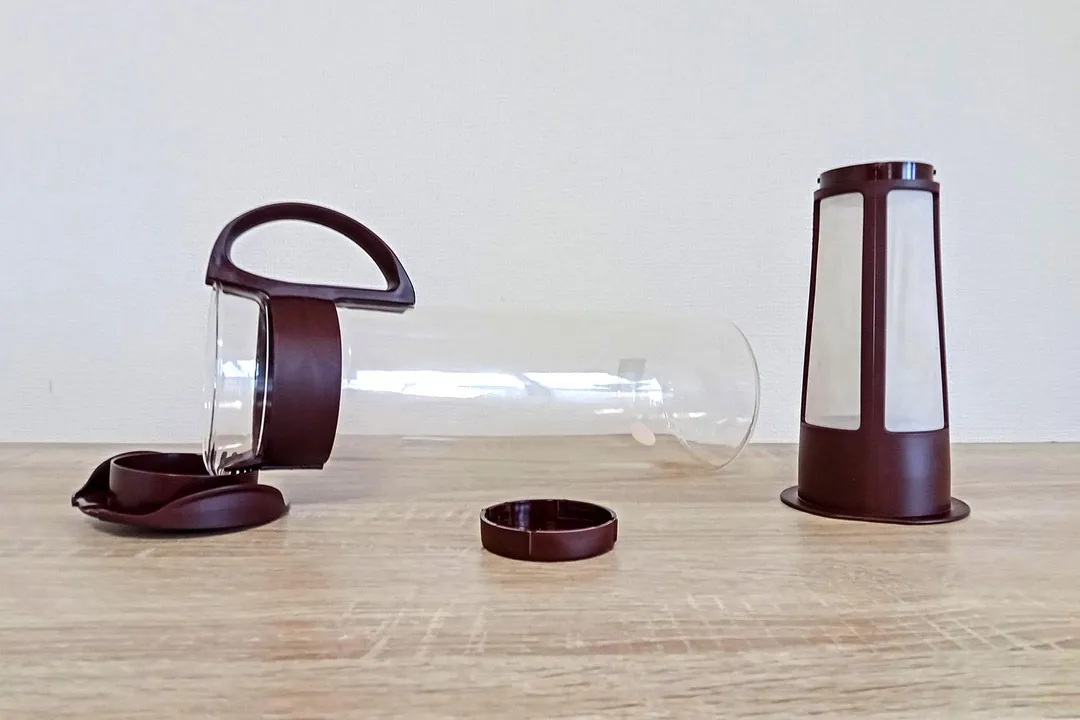

Usability
Brewing
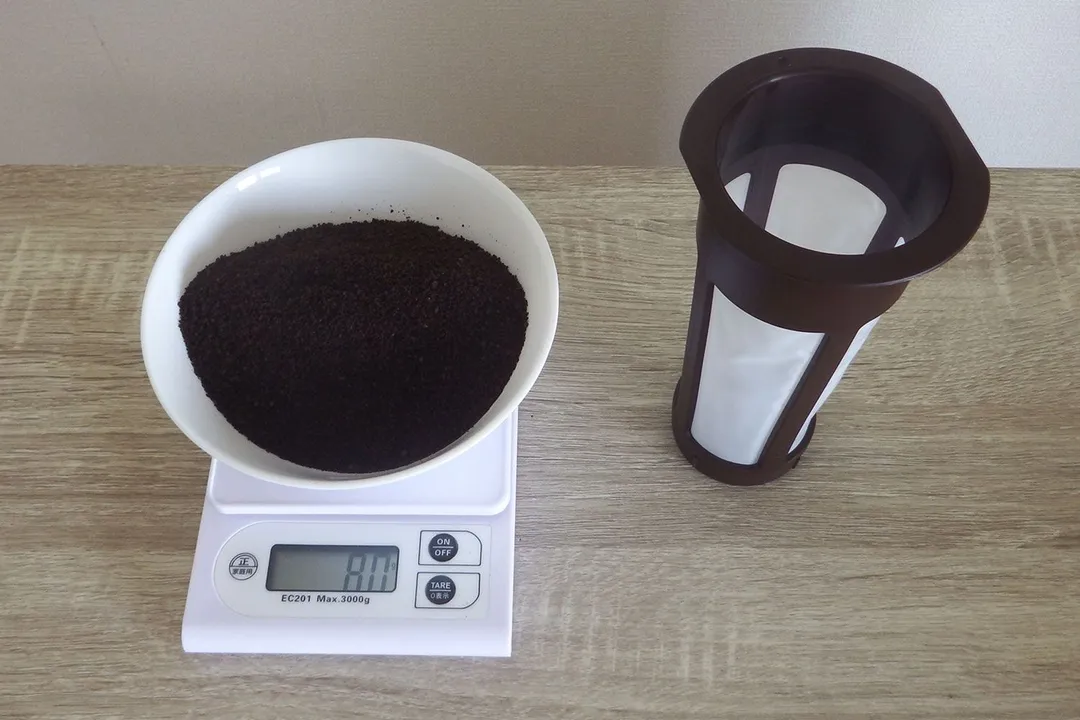

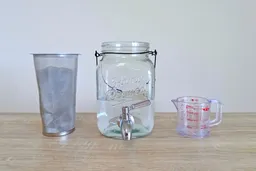

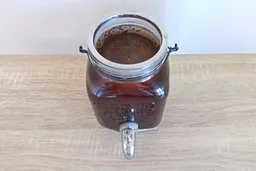
Decanting
Cleaning and Storage
Behind the Comparison
Roger Shitaki is a writer, author, and editor. His niches are household appliances, health & wellness, and travel. He’s a freelance contributor to a Tokyo lifestyle website and a leading ophthalmology magazine in Asia.

